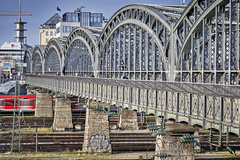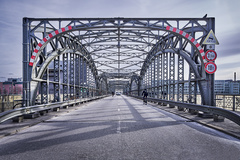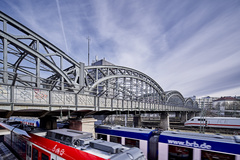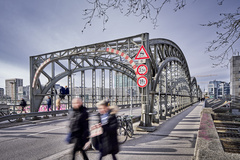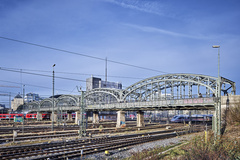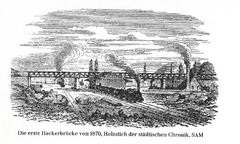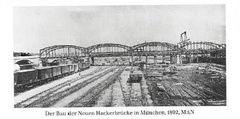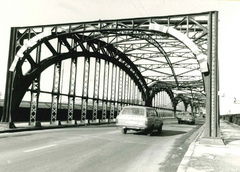Without a doubt Hackerbrücke (Hacker Bridge) in front of Munich Central Station is a landmark. Its strikingly curved arch structure stands out and is a monument of the city. It is one of the few remaining arch bridges from the 19th century made of wrought iron and has therefore been listed as a historic landmark in 1973. On warm summer evenings, the bridge is a popular meeting place to view the sun set behind the railway tracks. As the ravages of time have left damages at the historic bridge, it will undergo general restoration starting in 2027.
With two road lanes and footpaths on both sides, Hackerbrücke crosses 26 railway tracks in front of Munich Central Station. It is one of the main traffic routes in Munich’s centre. The bridge is also significant for public transport as it provides access to the regional train lines and a connection to the central bus terminal ZOB. During the Oktoberfest, Hackerbrücke is the main access route for festival visitors and closed for vehicle traffic.
The bridge was built in the years 1890 until 1894. It was partially destroyed during the 2nd World War and reconstructed in 1953. A comprehensive renovation took place in 1983/1984 during which the deck slab was completely replaced.
The structure consists of six riveted double-hinged truss arches made of welded steel of around 29-m span width each. On the north side it connects to a 3-span vault bridge with individual span widths of around 13 metres. The entire width of the bridge structure amounts to around 15 metres.
In view of the general restoration, SSF Ingenieure Munich, in joint venture with Ingenieurgesellschaft GMG, has been contracted for project planning of engineering structures and structural engineering, at first for basic evaluation and preliminary design. Subsequently, the further design stages including approval and final design as well as the production of the entire tender documents will follow.
The preliminary planning and a feasibility study for a possible gradient increase have already been completed. Following coordination with the state capital and Deutsche Bahn, design planning for the selected variant is to begin in the fall.
We are looking forward to completing the entire design for the general restoration of this special and historic bridge.
